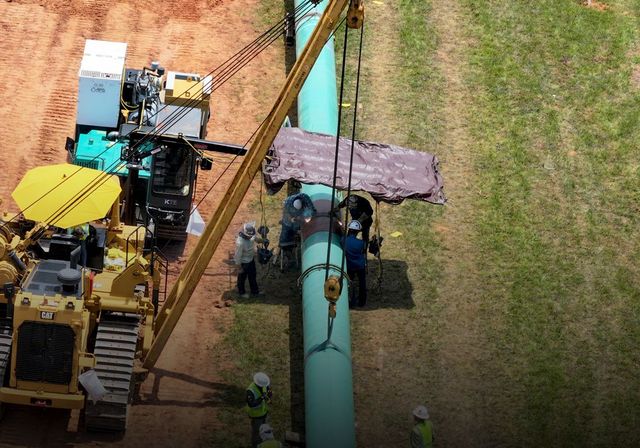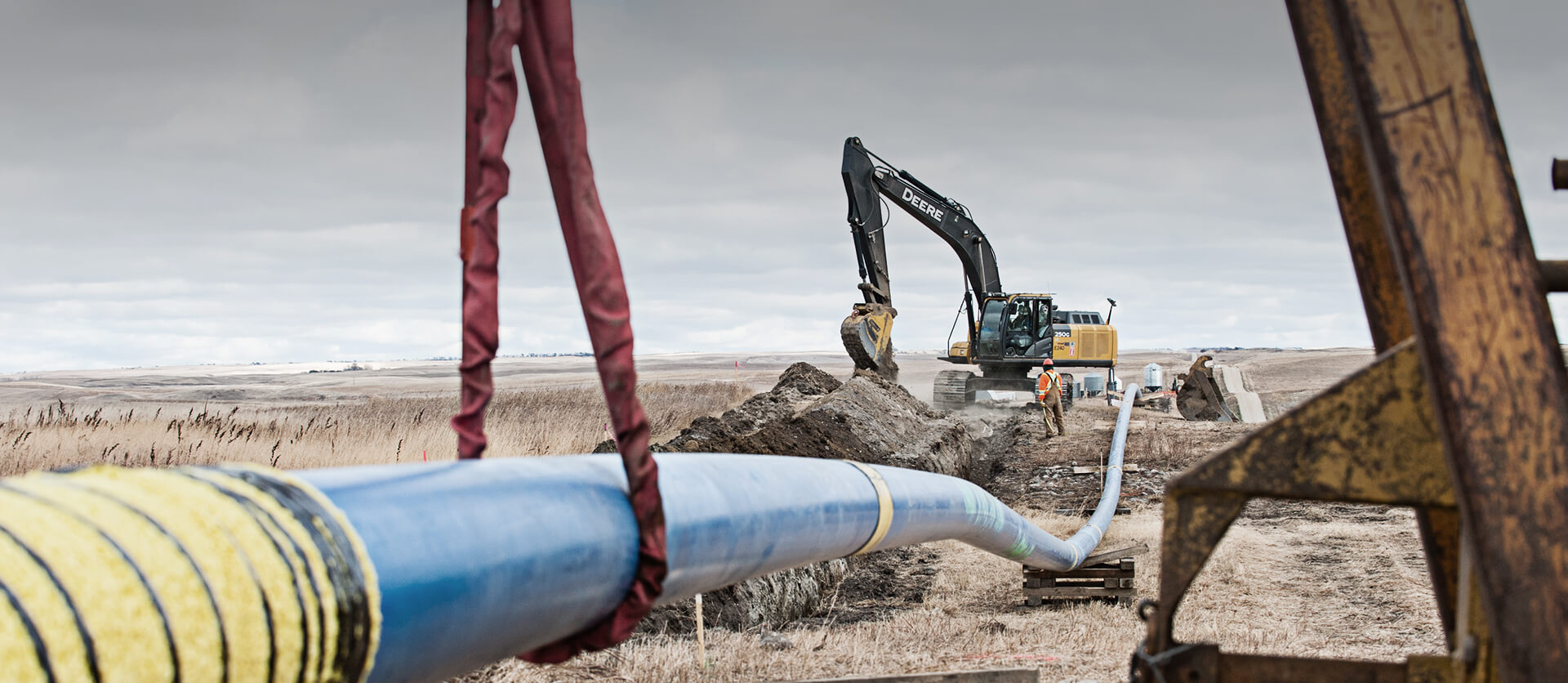Permian Basin Pipeline Construction - Truths
Wiki Article
How Permian Basin Pipeline Construction can Save You Time, Stress, and Money.
Table of ContentsThe Single Strategy To Use For Permian Basin Pipeline ConstructionGetting The Permian Basin Pipeline Construction To WorkOur Permian Basin Pipeline Construction StatementsPermian Basin Pipeline Construction - The FactsThe Only Guide to Permian Basin Pipeline ConstructionThe 9-Second Trick For Permian Basin Pipeline ConstructionA Biased View of Permian Basin Pipeline Construction
Cured-in-place pipe (CIPP) is a trenchless technology used to set up water, sewer, and other pipes without requiring significant excavation or intrusive excavating. The procedure begins by putting a lining right into the existing pipework, which is then loaded with material that sets to create a long-term pipe within the existing pipe.At MaxLiner U.S.A., we recognize the benefits of making use of CIPP, that include its affordability, rate, and marginal interruption during installation. This makes it an ideal option for contractors, plumbings, companies, and towns looking to lessen downtime while mounting brand-new pipelines. Among the main advantages of CIPP is its price savings on labor and tools, resulting in an extra cost-effective remedy than typical pipeline replacement techniques.

Instead, a lining is put right into the broken pipe and healed in place with warm, developing a seamless fixing that provides long-lasting protection against root seepage, deterioration, opening damages, and other common issues with existing pipelines. Not just does this approach eliminate the demand for extensive digging, however it likewise eliminates the possible risks linked with hazardous waste elimination.
Some Known Details About Permian Basin Pipeline Construction
Prices have a tendency to be reduced than replacing whole sizes of piping with open-cut installments also when factoring in the cost of liner materials. As a result of its reduced ecological influence and expense financial savings potential, cured-in-place pipeline installation is becoming increasingly popular as an alternative to typical repair service work in different industries.When it involves cured-in-place pipe (CIPP) setup, several advantages originate from its minimal time and expense. Most importantly, CIPP installations can be established up in a fraction of the moment it would consider conventional pipe substitute since no excavation is required - Permian Basin Pipeline Construction. Instead of excavating into the surrounding dirt and removing existing pipelines, CIPP utilizes advanced trenchless technology to set up resin linings or polyester fiber tubes inside existing pipelines
More About Permian Basin Pipeline Construction
This helps to reduce downtime and maintain your task on the right track, causing time savings that would not have actually been possible with conventional pipe substitute systems. Whether eliminating smaller sized sections of piping or carrying out complete relining tasks, this approach has certain benefits when it comes to expenditure. Not just is tools rental gotten rid of given that no excavation is required, however so are site reconstruction costs since a very little surface repair might be called for after installation.For that reason, with very little time and expense required for setup, cured-in-place pipeline installation is a terrific option for lowering labor expenses without giving up top quality job. As we'll discuss in the adhering to area, this kind of setup offers massive advantages when it comes to minimizing interruption around homes and companies.
See This Report about Permian Basin Pipeline Construction
This trenchless installation is a lot easier to execute than typical pipeline laying. As the name implies, the majority of excavation and related site preparation is stayed clear of due to the fact that the brand-new pipelines are fed via existing avenues. This makes it feasible to install underground pipes in a fraction of the moment required for the much more typical digging technique, which can create unneeded interruption to the environment, local roads, pathways, adjacent property owners, etc.Occasionally, it may take a little bit of excavating if these gain access to points are not already mounted in existing maintenance holes or catch containers. The outcome must still be less disruptive than digging deep into lengthy trenches, yet something to consider before devoting to this setup (Permian Basin Pipeline Construction). Overall, cured-in-place pipeline setup is sensible when minimal disruption is preferred given that most of the underground infrastructure remains undamaged while providing restored strength and reliability to existing pipelines


The cured-in-place installment procedure starts with inspecting the pipeline concerned to establish whether any damages exists or needs substitute. Later, if required, cleaning must happen inside the pipe to ensure that all material build-up is eliminated and all surface areas are smooth and unpolluted before lining setup. When these steps are completed, a special resin-coated felt or crossbreed really felt and fiberglass material is inserted into the pipe and equally dispersed along its size.
Unknown Facts About Permian Basin Pipeline Construction
Curing (either ambient, warmed water or air, or UV) is presented into television when the lining setup is full, healing and forming the resin material around the old pipe's form. It must be noted that extreme stress must be avoided at all costs due to the fact that it can create additional damages to over at this website the system.This thorough area regarding the 'Cured-In-Place Installation Process' has defined its detailed treatment. By understanding what goes into this process and its problems, we can value just how helpful it can be for many piping repair work - Permian Basin Pipeline Construction. Now allow us carry on to discover what types of products are used in this procedure in our next section
Fascination About Permian Basin Pipeline Construction
The suitable product can substantially influence the work, consisting of cost-effectiveness, sturdiness, efficiency, and performance. Polymer linings are usually favored for CIPP because they are highly sturdy and resistant to corrosion and wear and tear. They can also last anywhere from 10 to three decades, depending on the quality of the products made use of.It is usually much easier, less turbulent, and a lot more affordable than traditional repairs. One of the primary advantages of CIPP pipe installation compared to the typical technique of removing and changing any damaged pipeline areas with brand-new product is that CIPP pipe does not call for digging or excavating the surrounding areas.
This lowers the time and labor you could check here required for complex repair jobs. CIPP products are thinner than sections of the new pipeline, so they call for very little room while supplying superior longevity and resilience contrasted to various other approaches of repairing broken pipes. While CIPP installment offers some distinct advantages over typical methods of repairing pipelines, it can have certain constraints depending on which kind of particular circumstance needs it.
The Ultimate Guide To Permian Basin Pipeline Construction
Overall, CIPP pipe installation provides several benefits when it concerns saving time, cash, and effort throughout pipe repair projects. These benefits make it an attractive choice for those trying to find quick yet reputable ways to resolve broken pipelines in the house or in business settings. In the adhering to section, we will discuss a summary of cured-in-place pipe installment in higher detail to provide you an also far better understanding of its several advantages.Report this wiki page